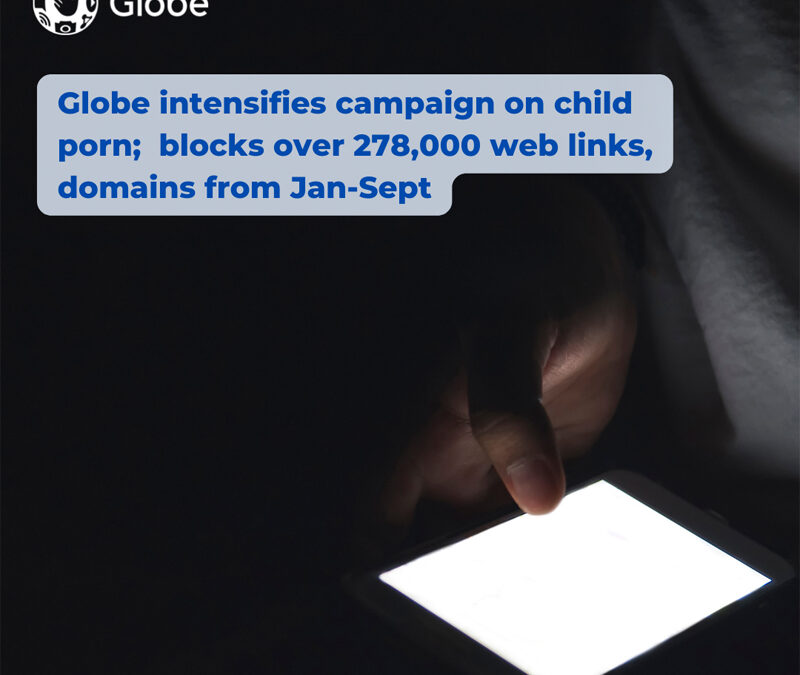Leading digital solutions platform Globe blocked 278,555 URLs and domains hosting child pornography from January to September this year, a record high that represents a leap from last year’s numbers with boosted proactive filtering amid the proliferation of such lewd content online.
The figure, which covers just the past three quarters of the year, represents a staggering 1,132.5% leap from the 2021 full year total of 22,371.
Out of the total, the company clamped down on 2,835 domains featuring child pornography from January to September this year as part of its strong commitment to addressing growing cases of Online Sexual Abuse and Exploitation of Children (OSAEC) in the country.
“Globe wants to keep the public safe online, especially children and the youth who are most vulnerable to online predators. This is why we are actively supporting government efforts to restrict access to illegal sites like those containing child pornography by blocking malicious websites and URLs,” said Globe Chief Privacy Officer Irish Salandanan-Almeida.
“We are relentless in boosting our capabilities to detect and block child pornography pages and other online content that are harmful to our customers. The astounding number of links we are able to block shows that our vigilance and security efforts have been effective even as we observe a rising number of these lewd and malicious content online,” said Globe Chief Information and Security Officer Anton Bonifacio.
The initiative is in line with Republic Act 9775 or the Anti-Child Pornography Act of 2009 which mandates all internet service providers (ISPs) to install technology, programs, or software to ensure that access to or transmittal of child pornography will be blocked or filtered.
It is also part of Globe’s commitment to the United Nations Sustainable Development Goals, including SDG No. 3, which promotes good health and well-being for all.
A study led by the US-based National Center for Missing and Exploited Children (NCMEC) has tagged the Philippines as among the world’s leading sources of content rooted in OSAEC.
Globe earlier invested $2.7 million in content filtering systems that block websites and imagery that promote child pornography, illegal gambling, and online piracy.
Aside from site blocking, Globe educates consumers on how they can protect minors from such risks through its #MakeITSafePH advocacy. It also continues to work closely with government agencies and international organizations to boost its campaign.
Through UNICEF’s SaferKidsPH, Globe pushes for responsible online behavior and promotes the rights and well-being of every child. SaferKidsPH carries the Globe Digital Thumbprint Program, an educational program that teaches responsible digital citizenship to students, teachers, parents, and netizens.
It also partnered with the UK-based Internet Watch Foundation (IWF) which provides a secure and anonymous place to report suspected child sexual abuse images and videos.
To learn more about Globe, visit www.globe.com.ph.
Liked this post? Follow SwirlingOverCoffee on Facebook, YouTube, and Instagram.


